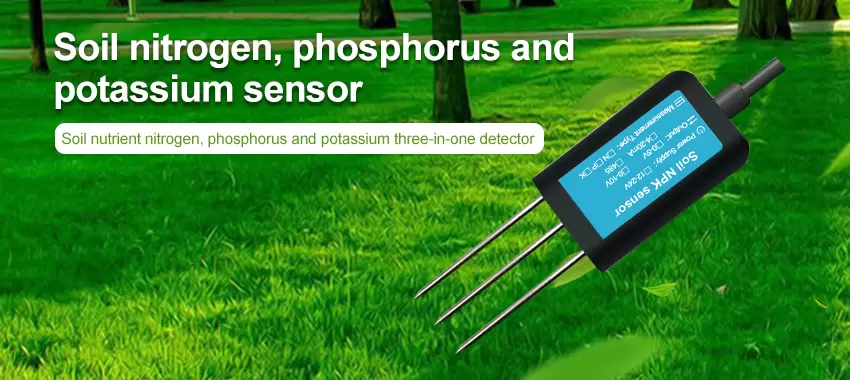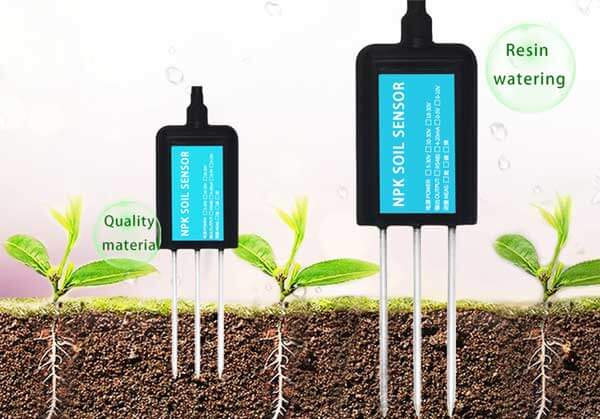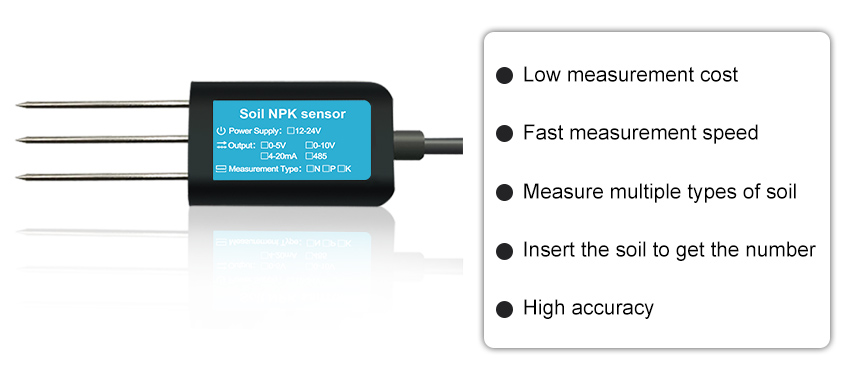Soil nutrient sensors
Soil nutrient sensors are devices that detect and measure the levels of nutrients in the soil. These measurements help farmers understand the nutrient status of their fields, adjust fertilizer application rates and timing, and ultimately improve crop yields.

Soil nutrient sensors operate using different technologies, including optical sensors, electrical conductivity sensors, and chemical sensors. Each sensing technology has its advantages and limitations, and the choice of sensor depends on the specific nutrient of interest and the soil type. Some common types of soil nutrient sensors include:
Optical sensors: These sensors use light to measure the absorbance or reflectance of specific wavelengths associated with the target nutrient. For example, an optical sensor can measure the chlorophyll content of plant leaves, which is an indicator of nitrogen levels in the soil.
Electrical conductivity sensors: These sensors measure the ability of the soil to conduct an electrical current, which is related to the concentration of ions in the soil. By measuring the electrical conductivity, these sensors can estimate the soil salinity and nutrient levels.
Chemical sensors: These sensors use a specific chemical reaction to detect the target nutrient in the soil. For instance, a phosphate sensor may utilize an enzyme reaction to measure the concentration of phosphate ions in the soil.
Ways in which soil nutrient sensors improve crop yields

Precision fertilization:
Soil nutrient sensors provide real-time data on the nutrient levels in the soil. This information can be used to adjust fertilizer application rates and timing, minimizing overuse of fertilizers and reducing input costs.
Site-specific nutrient management:
Soil nutrient sensors allow farmers to map the nutrient status of their fields and apply fertilizers only to the areas that need them. This approach can reduce fertilizer waste and environmental pollution.

Yield mapping:
By combining soil nutrient data with other agricultural data such as weather and crop yield, farmers can generate yield maps that show the spatial variability of crop yields. Yield maps help identify areas that require additional attention or nutrient management interventions.
Crop monitoring:
Soil nutrient sensors can be used in combination with other crop monitoring technologies such as remote sensing and drones to provide a comprehensive view of the crop’s health and growth status. This information can help identify nutrient deficiencies or overuse and take corrective actions.
In conclusion
soil nutrient sensors are essential tools in precision agriculture. By providing real-time data on soil nutrient levels, these sensors enable farmers to optimize crop production, reduce input costs, and minimize environmental impacts. As the technology continues to evolve, we expect to see more advanced sensors and data analytics solutions, creating even more opportunities for precision farming.